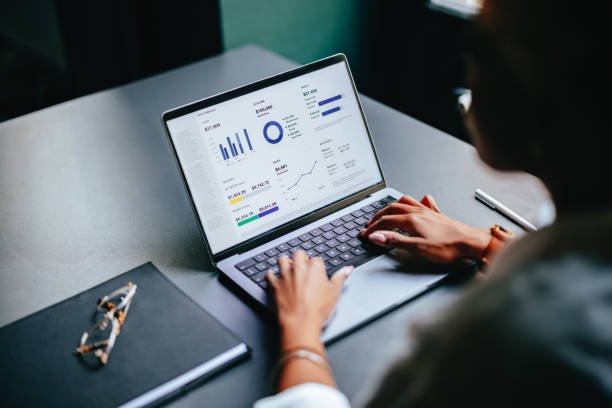1. Introduction
The Market Trends Using Business Analytics of the use of tools and techniques that analyze data to improve business decisions. Does the process involve collecting data, analyzing it, and identifying trends and patterns? The purpose of analytics is not only to understand the data of the past but also to develop strategies for the future.
Business analytics makes it easy to understand market trends, which is beneficial for any business. As quantitative and qualitative data are analyzed, a comprehensive view will be obtained. Business analytics can help companies gain valuable insights into their customers, competitors, and industry.
2. Data Collection: Market Trends Using Business Analytics

The first step to analyzing market trends is data collection. This data is relevant to customers, competitors, and market conditions. Today, with the help of digital tools and technologies, the process of data collection has become very efficient and accurate.
Data is collected through sources such as surveys, customer feedback, social media interactions, and sales data. The purpose of data collection is to gather accurate and relevant information that is helpful in understanding market trends. When collecting data the sources must be reliable and updated, the quality of the analysis will improve.
3. Data cleaning and preparation
After data collection, the next step is data cleaning and preparation. Data cleaning MTLB’s raw data will be sorted and irrelevant or duplicate information will be removed from us. This process ensures that the data is accurate and reliable.
Data preparation involves structuring and formatting data ready for analysis. What values are lacking in the stage, are addressed and conflicts are resolved. Clean and well-structured data makes analysis results more effective and improves insights.
4. Descriptive Analytics: What Happened?
Descriptive analytics are techniques that summarize and describe past data. Esme reviews data, such as sales figures, consumer behavior, and market conditions. Descriptive analytics lets us know what happened at a given time, and based on that we can identify trends and patterns. Charts, graphs, and summary reports are part of the process. These analytics provide context to our historical data which is important for future decision making.
5. Diagnostic Analytics: Why did it happen?

The purpose of diagnostic analytics is to understand what causes certain events and outcomes. Esme data is analyzed at a deeper level to identify root causes. For example, if there is a sudden drop in sales, diagnostic analytics can reveal what caused the decline.
Does the process use statistical techniques and data mining tools that reveal the underlying factors in the data? Diagnostic analytics provide businesses with critical insights to solve problems and improve.
6. Predictive Analytics: What Could Happen?
Predictive analytics is used to predict upcoming trends and events. Forecasts use historical data and statistical models to predict future scenarios. Predictive analytics makes it possible for businesses to predict market trends, consumer behavior, and industry changes.
Machine learning algorithms and predictive models help predict the likelihood of future outcomes from data. These insights help businesses develop proactive strategies essential for long-term success.
7. Prescriptive Analytics: What Should We Do?
Prescriptive analytics focuses on predicting what actions to take for future situations. uses complex algorithms and optimization techniques to achieve the best possible results. Can develop business-specific recommendations and action plans through prescriptive analytics that align with market trends and business objectives.
It plays an important role in strategic analytics and ensures that decisions are data-driven and effective.
8. Visualizing Data: Understanding Insights
Data visualization is a good step in representing complex data in the form of charts, graphs and dashboards. These concepts make it easier to understand and interpret the data. Effective data visualization in business analytics makes it easy to communicate and share insights with stakeholders.
Visualization tools such as Tableau, Power BI, and Excel simplify the process and make data interactive and user-friendly. Smart visualization strategies make insights more accessible and actionable.
9. Tools and Technologies for Business Analytics

What advanced tools and technologies are available to analyze market trends? Can effectively analyze and interpret business data using tools. Popular analytical tools include Google Analytics, SAS, IBM SPSS, and R Studio.
These tools help with data collection, cleaning, analysis, and visualization. Each tool has its own specific use case and features that match the needs of the business. With the help of technology, the process of data analytics becomes more and more accurate, which helps in effective decision-making.
10. Conclusion
The future of business analytics is bright and is constantly improving with evolving trends and technologies. Data-driven decision-making has become a core part of every business today and analytics has an important role to play. In the future, the integration of technologies like artificial intelligence and machine learning will make analytics even more powerful and effective.
Businesses must constantly update and enhance their analytics strategies to stay in tune with market trends and customer needs. Effective use of business analytics can help companies gain a competitive edge and accurately analyze market trends, which is essential for long-term success.





